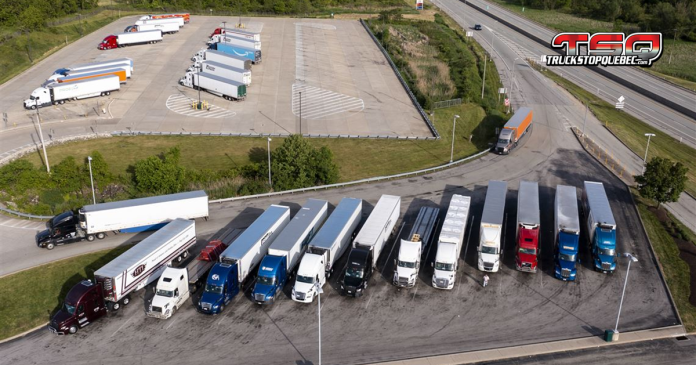The truck parking shortage is a major concern in the road transport industry, impacting the daily operations and safety of truck drivers.
In June, the U.S. Congress announced a $200 million allocation in a legislative bill aimed at increasing safe parking spaces for commercial vehicles. This bill, HR 9028, which was introduced in July, provides grants to improve driver safety and increase the availability of truck parking facilities.
The U.S. Department of Transportation (USDOT) will be responsible for distributing these grants to states and local governments. To qualify, projects must meet specific criteria, such as addressing truck parking capacity in key corridors and improving road safety. This initiative could alleviate the burden on truck drivers, who often spend valuable time searching for safe parking spaces.
The shortage of truck parking has been a persistent issue in the trucking industry for decades. According to a USDOT study, 98% of drivers report difficulties finding secure parking, leading to significant financial losses. Legislation like the Truck Parking Safety Improvement Act, which proposes $755 million over three years to expand rest areas, provides hope for meaningful change.
In Canada, truck drivers face similar challenges. Major highways often lack safe parking spaces, forcing drivers to park in unsafe areas or continue driving while fatigued. While investments in road infrastructure are crucial, the need for truck parking is urgent. Governments are focusing on the electrification of transport, but driver safety must be a top priority, starting with ensuring that truckers can access parking whenever needed.
The truck parking issue is a growing concern, particularly in high-traffic areas such as British Columbia and Ontario. Truck drivers, especially around the Lower Mainland in B.C., struggle to find adequate overnight parking. There is only one significant facility on Highway 91 near Nordel Way, with plans for additional spaces in North Surrey, but this will provide minimal relief considering the demand. The region has over 20,000 heavy vehicles, and drivers are often forced to park in unsafe or unauthorized locations, which creates safety and logistical problems for both the industry and local communities.
Similarly, Ontario faces significant challenges in cities like Brampton and Caledon, where illegal truck parking has become rampant. With Peel Region serving as a central hub for Canada’s supply chain, the shortage of truck parking spots puts immense pressure on both truckers and local governments. Various levels of government are now working to address these issues by considering innovative solutions such as utilizing underused facilities and revising land-use policies.
As the demand for freight transport grows, sustainable solutions are essential. Improved planning, the integration of parking location technologies, and the expansion of rest areas along major highways are key strategies that could be adopted in Quebec to address this critical issue.















